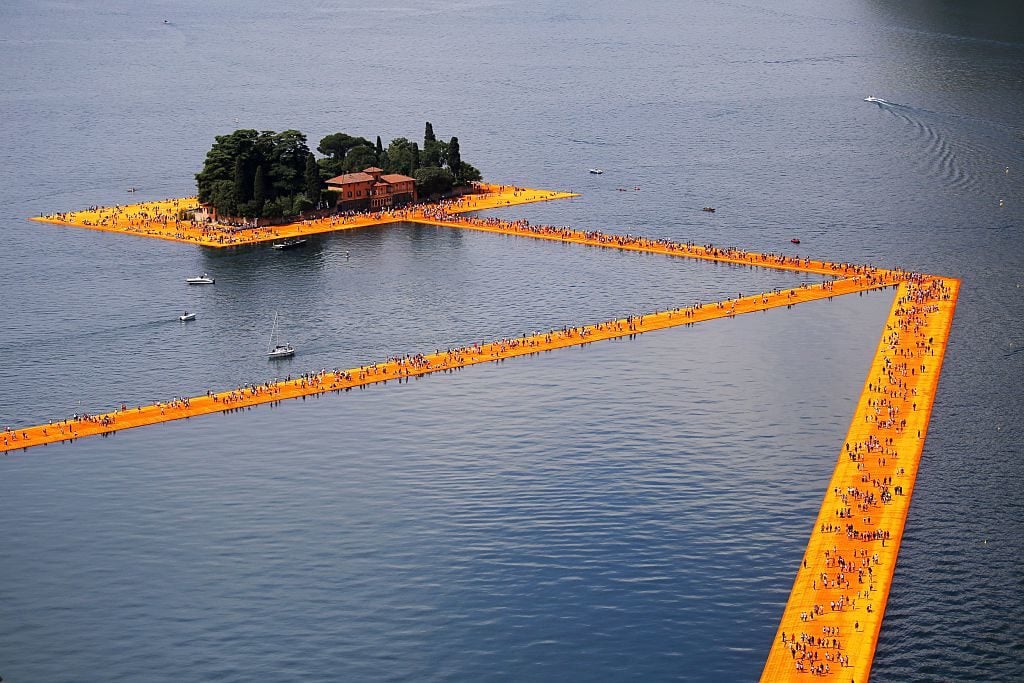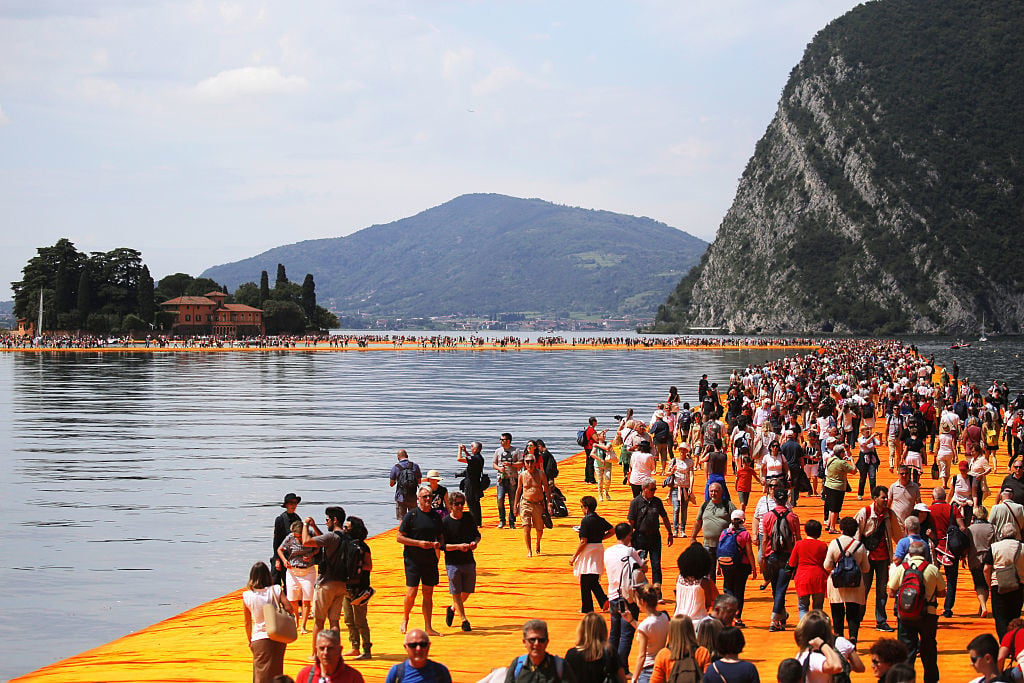On View
Italian Consumer Group Files Complaint Against Christo’s ‘Floating Piers’
They consider the installation a waste of public money.

They consider the installation a waste of public money.

Lorena Muñoz-Alonso

Over 30 years in the making, Christo’s latest masterpiece, the epic and hotly anticipated Floating Piers in Italy’s Lake Iseo, opened on June 18 to a frenzied audience of thousands.
But it seems that not everybody is happy about the stunning and highly photogenic project, a fabric-based installation that effectively creates a golden, three-kilometer-long bridge between the islands of Monte Isola, San Paolo, and the mainland town of Sulzano.
On Saturday, according to Rome (AFP) via Art Daily, the Italian consumer group Codacons announced it would file a complaint today with the Lombardy region’s spending watchdog to investigate the costs of the installation.

Visitor numbers to Christo’s Floating Piers (2016) overwhelmed local authorities. Photo: MARCO BERTORELLO/AFP/Getty Images.
Access to the Floating Piers is free of charge, and interest in the piece has been so high that in order to control overcrowding, local authorities had to stop visitors from continuing their journey towards the lake, effectively leaving over 3,000 people stranded at the Brescia train station.
Codacons claims that the costs related to evacuating the stranded tourists, cleaning up after tens of thousands of visitors, and enforcing health and safety measures have made the installation too costly to maintain, to the point that they claim one should now raise the question of whether the ambitious project should have been authorized in the first place.
“We want to know how much taxpayers’ money has been spent on a project which, until now, seems to have generated enormous publicity for the artist without bringing direct benefits to local entities and citizens,” Codacons said in a statement.
Codacons’ allegations about possible waste of public funds are not doing any favors to an installation that is already dealing with pressing issues triggered by its huge appeal.
Last week, the organizers of Floating Piers, which has been curated by Germano Celant, have announced that the installation will have to close at nights during its last week (it closes on July 3) because the fabric is being worn out faster than predicted.
Organizers expected a total of 500,000 visitors during the two-week period that the installation is open to the public but, only in the first five days, 270,000 eager visitors turned up on the walkways.